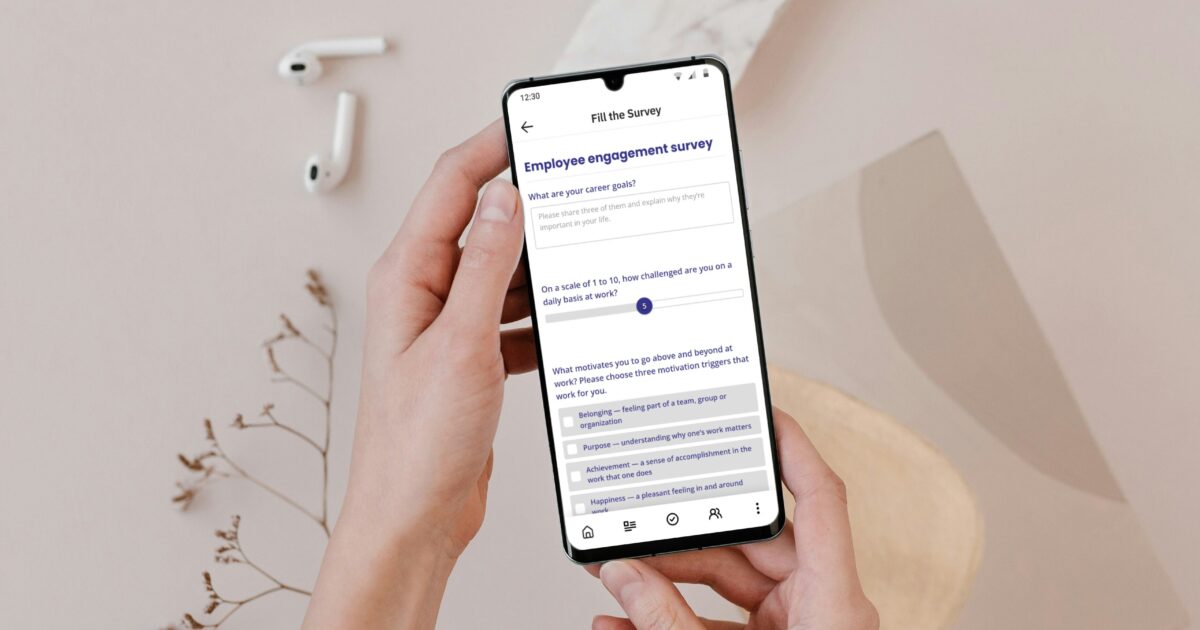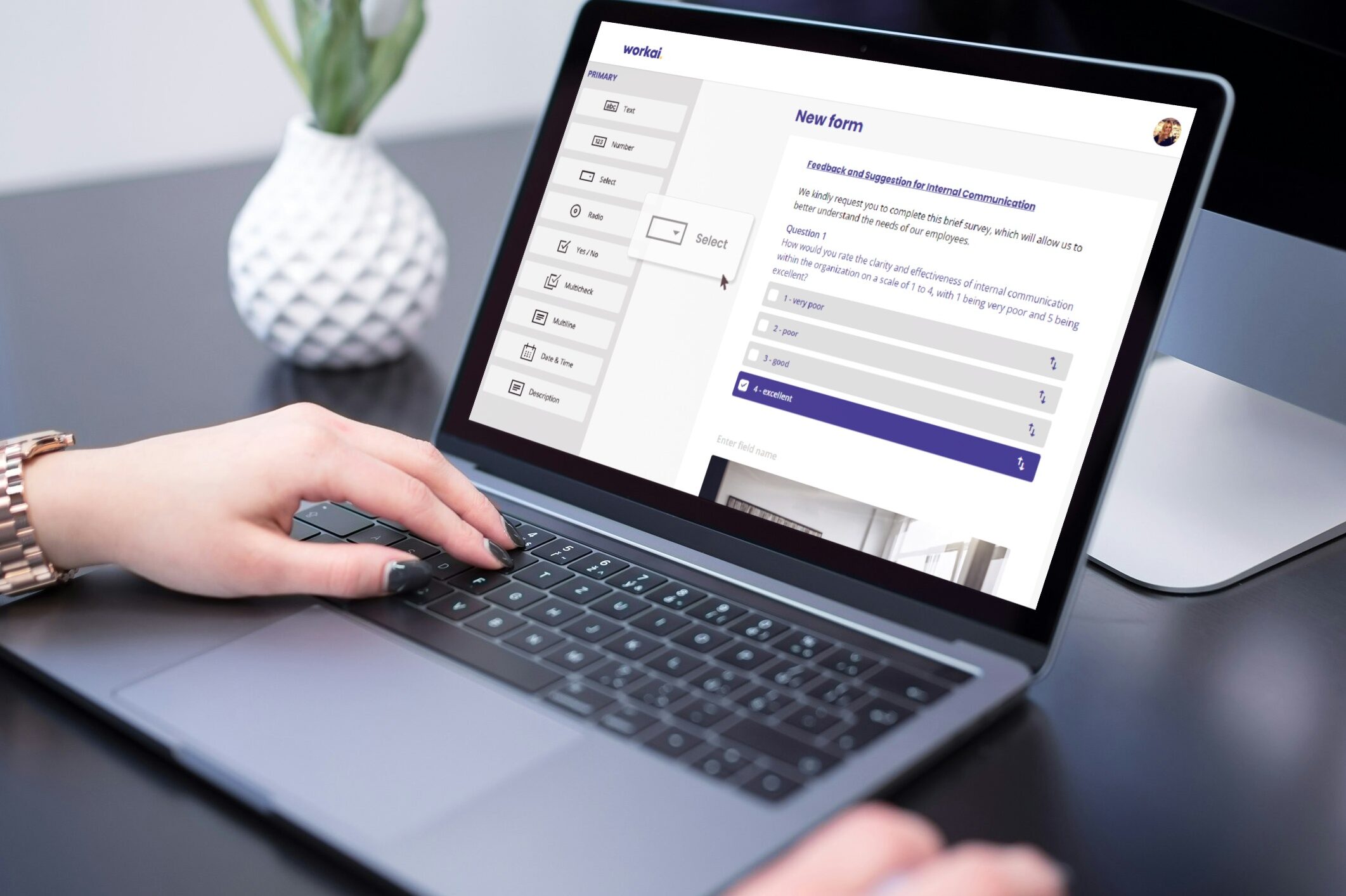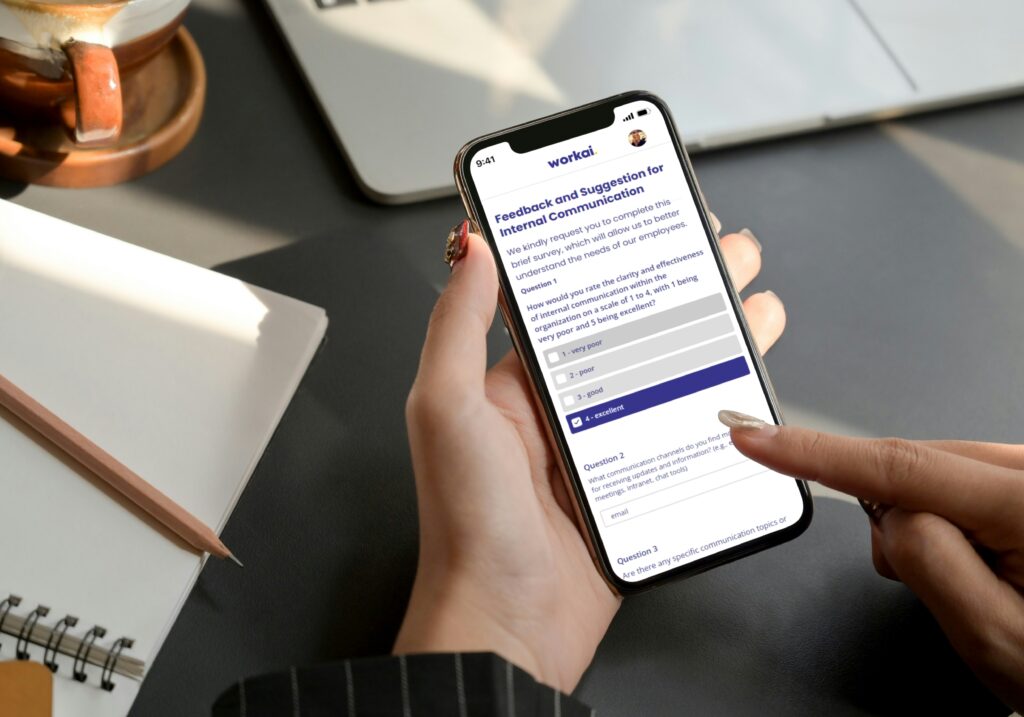
11 steps to implement an effective employee engagement survey strategy
Implementing an employee engagement survey is not merely about distributing a questionnaire; it’s a strategic process that demands careful planning and execution to yield actionable insights and drive meaningful improvements. Here’s a detailed article to help you develop and implement an effective employee engagement survey strategy.

1. Define your objectives
The first step in crafting an employee engagement survey is to define clear objectives. Understanding what you aim to learn is crucial, whether it’s gauging overall job satisfaction, work-life balance, or identifying areas needing improvement such as career development opportunities and recognition programs. A clear purpose helps in formulating relevant questions and ensures that the survey is targeted and effective. Including a clear header and a detailed description of the survey’s objectives at the beginning can help participants understand the importance of their input and how it will be used to make improvements.
2. Choose the right survey type
Selecting the appropriate type of employee engagement survey is essential. You need to decide whether a comprehensive annual survey or more frequent pulse surveys are best suited for your organization. Comprehensive surveys provide a broad overview of employee engagement and satisfaction, while pulse surveys, conducted more frequently, can capture timely insights and trends. Each type of survey has its own benefits and can be used in conjunction to get both in-depth and real-time feedback.
3. Design your questions
Crafting well-designed questions is key to gathering meaningful data. Use a mix of question types to get a comprehensive view. Multiple choice questions are useful for collecting clear, straightforward responses. Likert scales, which measure levels of agreement or satisfaction, provide nuanced insights into employee sentiments. Open-ended questions allow respondents to provide detailed feedback in their own words, offering depth that structured questions might miss. Dropdowns and rank order questions help with more complex response options and prioritizing factors. Ensure that your questions are clear, unbiased, and directly aligned with your objectives. Avoid leading or double-barreled questions, and keep the language simple to avoid confusion.
4. Communicate with employees
Effective communication is vital for the success of your survey. Clearly explain the purpose of the survey and how the results will be utilized. Transparency builds trust and encourages higher participation rates. Emphasize the potential improvements that could result from their feedback. Sometimes, offering incentives, such as raffle entries or small rewards, can further boost participation. Reinforce the importance of each individual’s participation by making it clear that every response adds value.

5. Ensure anonymity
Employees must feel safe when providing feedback. Ensuring the anonymity of their responses is crucial. When employees trust that their honest opinions won’t lead to repercussions, they are more likely to provide candid feedback. Assure them that their responses are confidential and will be used solely for the purpose of improvement.
6. Time it right
Timing the employee engagement survey correctly can significantly impact participation rates. Avoid conducting surveys during particularly busy or stressful periods, such as the end of the fiscal year or major project deadlines. Mid-week distribution generally yields better response rates. Consider the typical work patterns of your employees and schedule the survey during a time when they are less likely to be preoccupied. For global organizations, take into account different time zones to ensure that the survey is accessible to all employees at an appropriate time.
7. Make it accessible
The accessibility of your survey can affect participation rates. Utilize user-friendly platforms like Workai Forms, Google Forms, or SurveyMonkey to make the survey easy to complete. These platforms offer mobile accessibility, which is crucial for employees who may not always have access to a computer. Ensure the platform is straightforward to navigate, reducing any barriers to participation.
8. Analyze the results
Analyzing the survey results effectively is critical. Employ quantitative analysis methods like descriptive statistics, frequency distribution, and cross-tabulation to summarize and compare data. Visual tools such as charts and graphs can make complex data more accessible and easier to understand. Qualitative analysis techniques, including thematic analysis and coding, can help identify common themes in open-ended responses. Advanced methods like regression analysis and sentiment analysis can provide deeper insights and help benchmark against industry standards.

9. Share the findings
Once the data is analyzed, it’s essential to share the findings with stakeholders in a clear and concise manner. Present the data using visual aids such as charts and graphs to enhance understanding. Start with an executive summary that highlights the key findings and insights, followed by a detailed report that includes all data analysis and interpretations. Regularly updating employees on the progress of implementing their feedback demonstrates that their input is valued and acted upon.
10. Develop an action plan
Based on the survey results, create a detailed action plan. Set specific, measurable, achievable, relevant, and time-bound (SMART) goals for each area identified for improvement. Assign responsibilities, set deadlines, and outline the methods and resources needed to implement the changes. Communicating the action plan to all employees and highlighting how their feedback has led to specific actions reinforces the importance of their input and keeps everyone informed.

11. Follow up
Regular follow-up is necessary to ensure the effectiveness of the implemented actions. Continuously communicate the progress of your action plan and conduct follow-up surveys to assess the impact of the changes. This not only shows employees that their feedback is being taken seriously but also helps in creating a continuous improvement loop. Recognizing and celebrating the achievements and improvements resulting from the employee engagement survey can significantly boost morale and foster continued participation in future surveys.
Conclusion
Implementing an effective employee engagement survey strategy involves careful planning, clear communication, and a commitment to act on the results. By defining clear objectives, choosing the right survey type, designing well-crafted questions, ensuring anonymity, and sharing and acting on the results, you can create a cohesive and engaged workplace. Regularly seeking and acting on employee feedback not only enhances employee satisfaction and retention but also drives the overall success of your organization. Let the voice of your employees guide you toward a brighter, more collaborative future.
Recognizing and celebrating the achievements and improvements resulting from the employee engagement survey can significantly boost morale and foster continued participation in future surveys. To dive deeper into this topic, download our comprehensive 50-page guide on employee surveys, which includes over 150 example questions you can ask your employees and a detailed discussion of strategies to implement. This resource is designed to help you create effective surveys that will drive positive change and enhance engagement in your organization.
